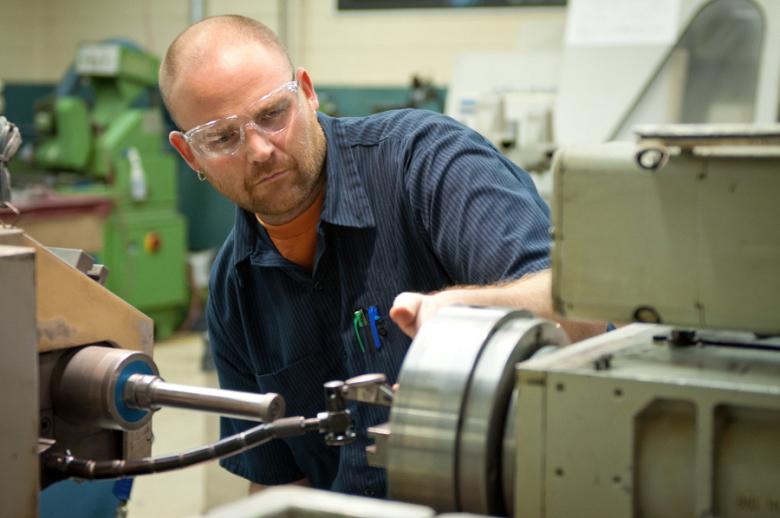What is metal fabrication and where is the industry headed?
Today’s metal fabrication shops are far different from those operating in the booming post-World War II economy. A fluctuating market, cyclical industries, and the need for sophisticated equipment and quick turnaround times in both production and output have shops scrambling to maintain profitability.
Metal fabrication is the process of building machines and structures from raw metal materials. The process includes cutting, burning, welding, machining, forming, and assembly to create the final product.
Metal fabrication projects include everything from hand railings to heavy equipment and machinery. Specific subsectors include cutlery and hand tools; architectural and structural metals; hardware manufacturing; spring and wire manufacturing; screw, nut, and bolt manufacturing; and forging and stamping.
The main benefit of metal fabrication shops is the centralization of these many processes that are often required to be performed in parallel via a collection of vendors. A one-stop metal fabrication shop helps contractors limit their need to work with multiple vendors to complete complicated projects. Australian General Engineering is one such metal fabricator in Melbourne, Australia performing these services austgen.com.au.
How Is Metal Fabrication Performed?
Metal fabrication industry has broad applications across a great many industries and consumer products. Standard raw materials used include plate metal, fittings, castings, formed and expanded metal, sectional metal, flat metal, and welding wire.
Shops employ many different experts, including welders, ironworkers, blacksmiths, boilermakers, and similar professionals that work with these raw materials and convert them into their final products.
According to the Bureau of Labor Statistics, approximately 1.425 million workers are employed in metal fabrication. Among them are cutting, punching, and press machine setters and operators; first-line supervisors; managers; machinists; team assemblers; welders, cutters, solderers, and brazers.
Sector Characteristics
Because demand is driven by the economy, the profitability of the metal fabrication industry relies on economic growth to thrive. Since the economic rebound after the last recession, metal fabrication has become a strong and intense business that continues to recalibrate itself and flourish. Current adjustments include a shift from leaning on a few large projects to maintain a yearly profit to attempting to maintain steady sales volumes by diversifying and continuing to follow the successful template of previous years.
Most companies in the metal fabrication business work primarily to fortify their organization’s strategy in a manner that can best help them make it through changes in the global economy. When the local economy thrives, these boosts tend to cause consumers to loosen their purse strings and purchase bigger-ticket items such as cars, boats, and houses. And as the population continues to grow, new construction picks up, requiring additional agricultural and commercial machinery.
The metal fabrication industry is highly cyclical and depends on industries such as auto, aerospace, construction, and energy. Earnings for each sector vary based on market and economic factors affecting those markets. Investors must look at their particular customer base and the economic influences affecting them in any given year.
To gather the best predictions, metal fabricators can start by looking at significant statistics for that area of business, be it home construction, energy, defense, or any other area. By diversifying the customer base and collecting customers from a variety of sectors, the cyclical nature of the industry can better manage to keep net profits consistent.
Metal fabricators that can quickly shift product lines can protect profits and focus on areas where demand is most prevalent. This type of diversification can create a sustainable revenue base, regardless of revolving economic conditions.
A Look at the Future
The industry is learning to balance capacity with variability and find new ways to build support for the inherent variability of customer demands that are driven by an ever-changing economy. As machinery becomes more sophisticated, the ability to maintain a constant level of capital and profit is improving.
Although forecasting can be difficult in a business dependent on the economic fortune of its customers, the general consensus remains that those who can keep up with rapidly changing demands while still maintaining a high output capacity will elbow into a position of maximized profits.
The Need for Capital
To maintain profitability, metal fabrication shops require capital to quickly adjust output and meet the demands of a diverse customer base. Covering costs is easy in a booming economy, but when belts tighten, the industry must begin to cut corners and reduce variable costs, which in turn naturally limit the customer base the shop is able to cater to at any given time. The ability of these companies to make modern investments that allow them to maintain a variable output is the key to sustaining customer diversification.
By pairing efforts to diversify their customer base with economic vigilance and an eye on competitor costs, as well as ensuring the entire manufacturing process is streamlined from top to bottom, fabricators can protect their investments from the impacts of negative environmental influences.
The metal fabrication industry stands as a solid investment built on highly fluid customer demand. This lucrative moving target can be difficult to pin down, as shops struggle to gear their efforts and capital toward those sectors that yield the highest profits at any given time.
The volatility of the market has required the industry to streamline production practices and focus on the ability to reliably produce high-capacity output for a many varied customer requests.
Those metal fabricating shops that can optimize their manufacturing process and operating machinery, paired with stakeholders who can pay close attention to competing costs and the economic trends affecting their customer base, will lead the industry.
The post What is metal fabrication and where is the industry headed? appeared first on Australian General Engineering.
from Australian General Engineering http://www.austgen.com.au/what-is-metal-fabrication-and-where-is-the-industry-headed/
via IFTTT

Comments
Post a Comment